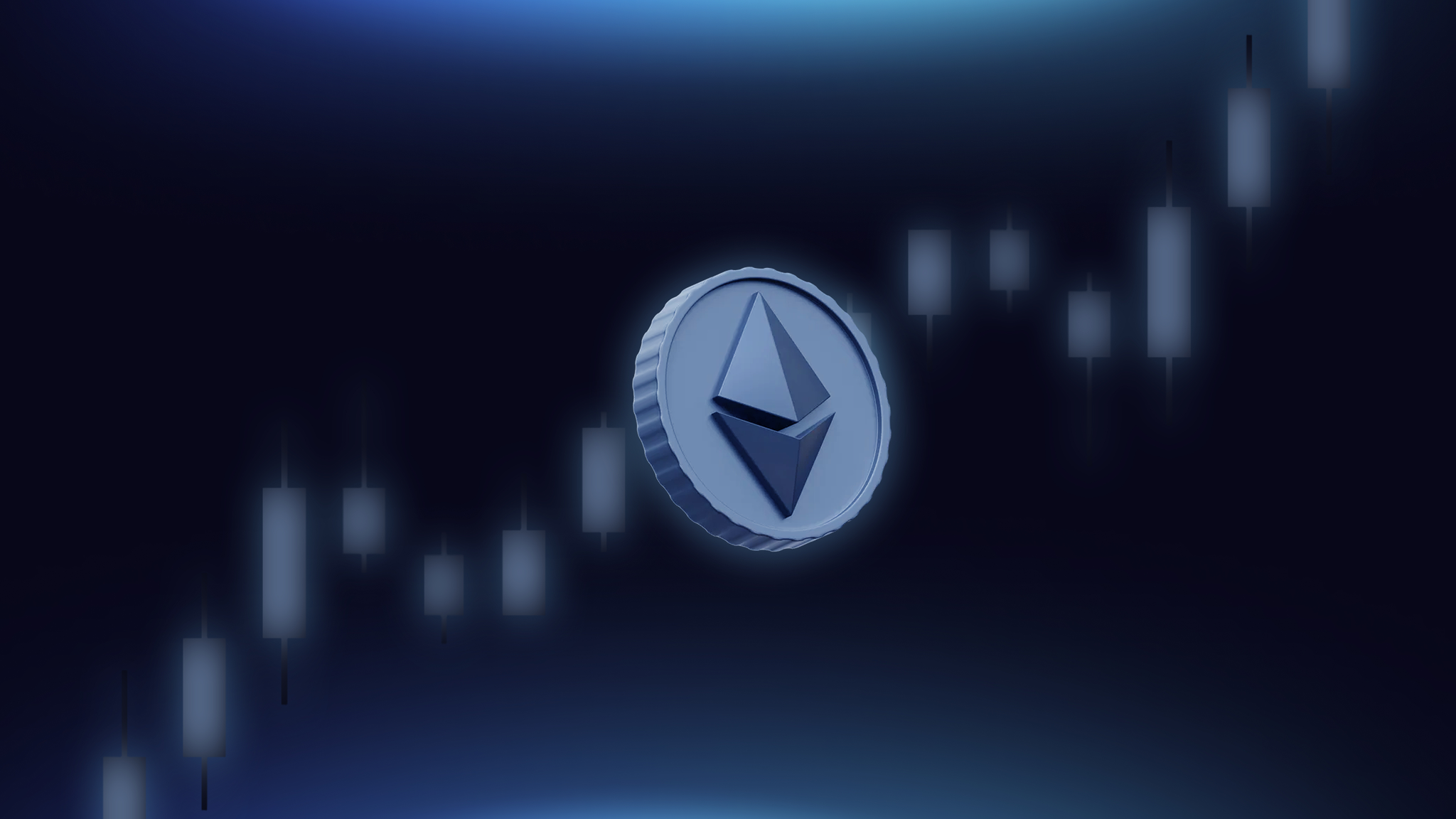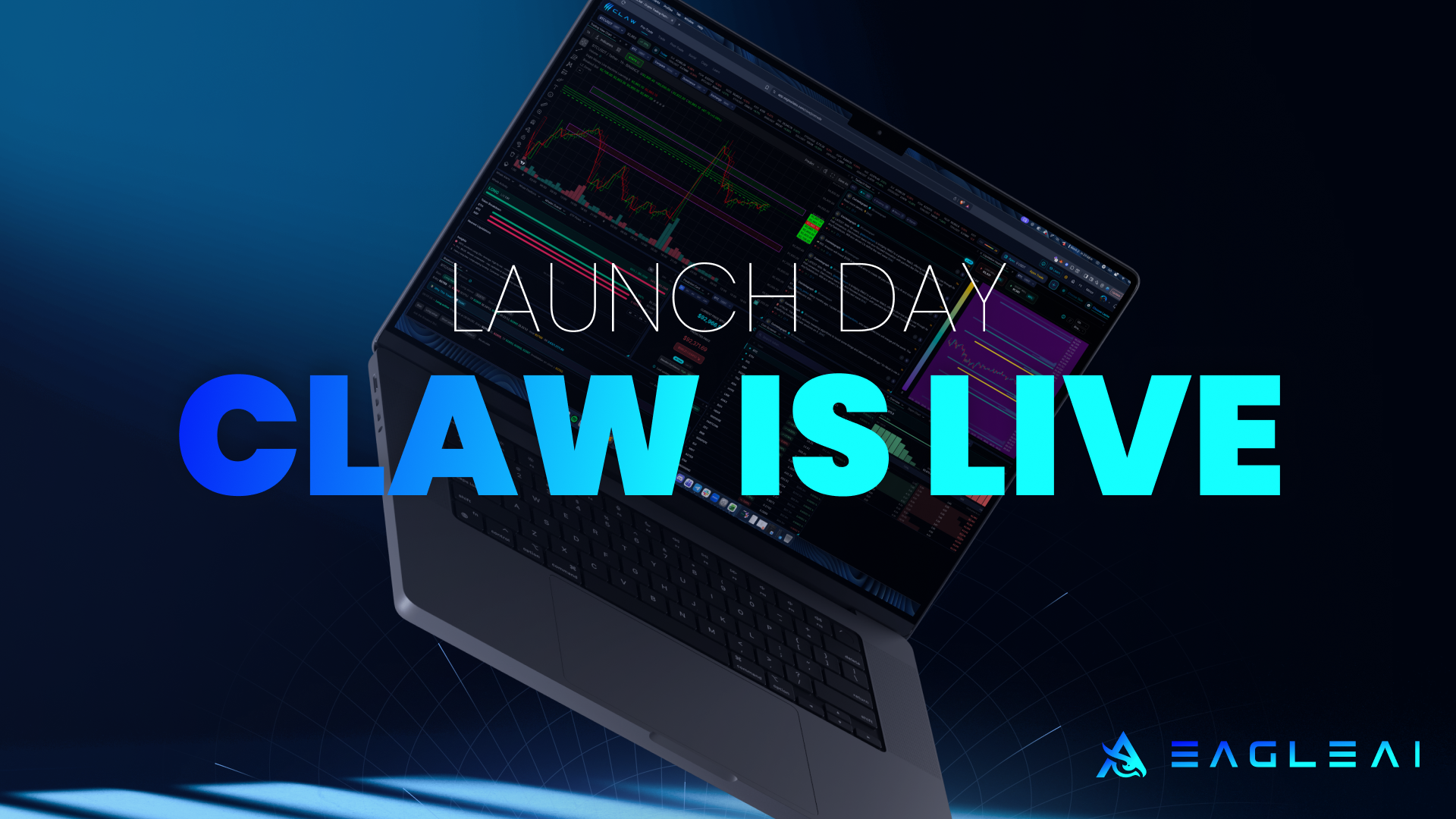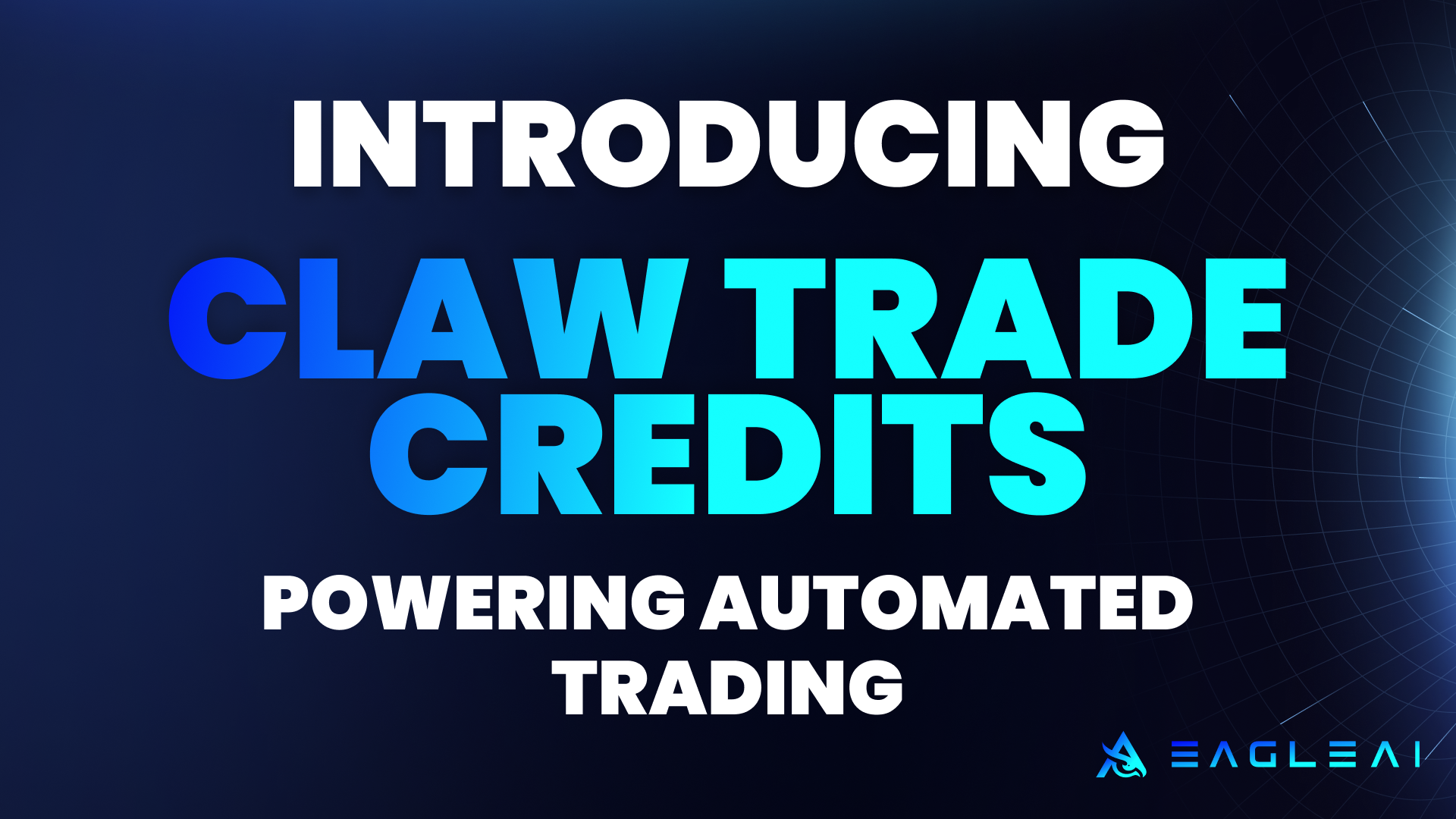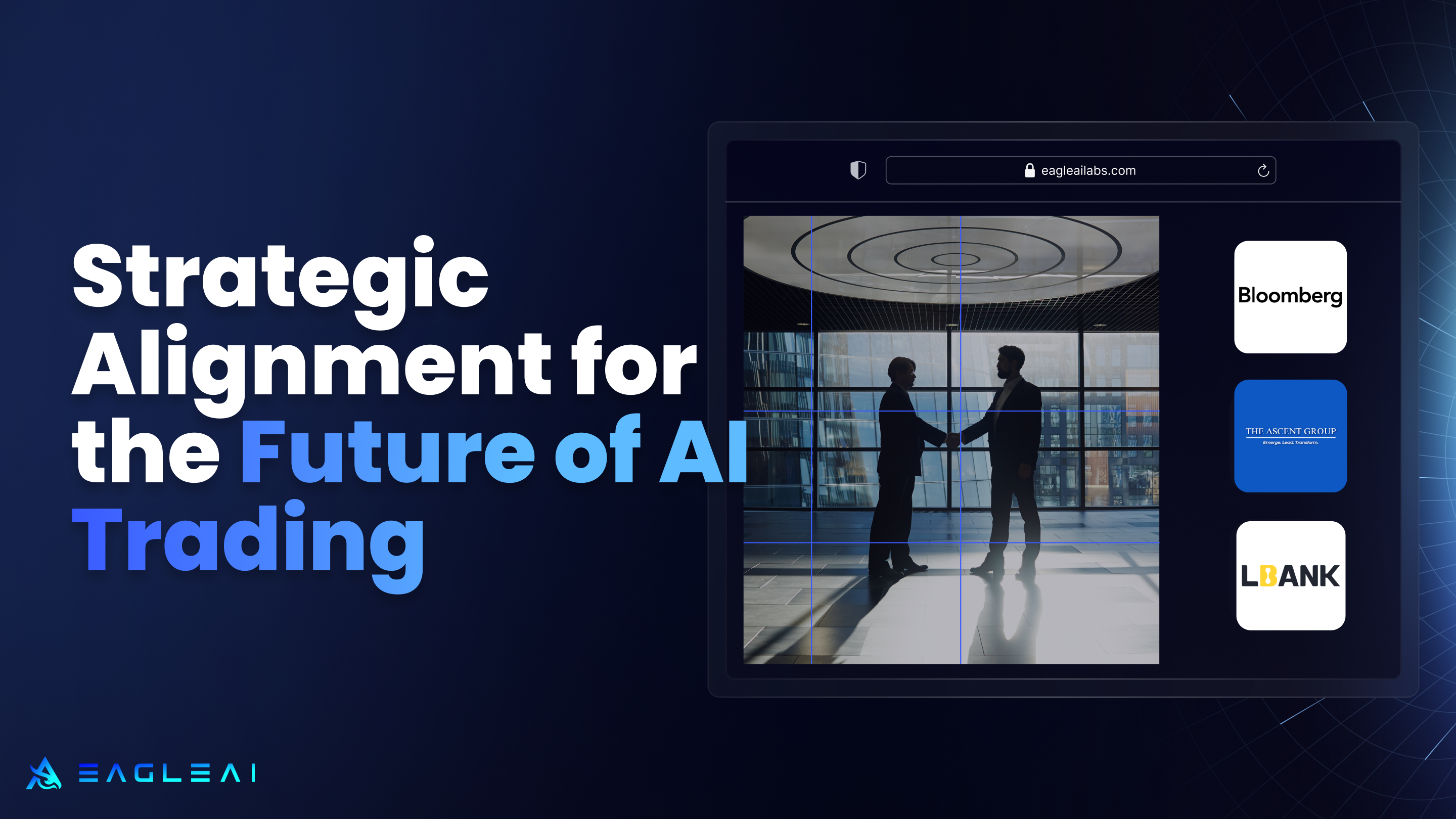The Future Of Finance: Bridging DeFi And TradFi Through AI Innovation
Finance is changing. Traditional systems are merging with decentralized technologies, creating a new kind of infrastructure. This shift is not only technical it affects how capital moves, how markets interact, and how risk is understood. Artificial intelligence (AI) plays a key role in this transition. By analyzing large sets of data from both traditional and decentralized sources, AI offers insights that help connect these two financial worlds.

Low-code tools are going mainstream
Purus suspendisse a ornare non erat pellentesque arcu mi arcu eget tortor eu praesent curabitur porttitor ultrices sit sit amet purus urna enim eget. Habitant massa lectus tristique dictum lacus in bibendum. Velit ut viverra feugiat dui eu nisl sit massa viverra sed vitae nec sed. Nunc ornare consequat massa sagittis pellentesque tincidunt vel lacus integer risu.
- Vitae et erat tincidunt sed orci eget egestas facilisis amet ornare
- Sollicitudin integer velit aliquet viverra urna orci semper velit dolor sit amet
- Vitae quis ut luctus lobortis urna adipiscing bibendum
- Vitae quis ut luctus lobortis urna adipiscing bibendum
Multilingual NLP will grow
Mauris posuere arcu lectus congue. Sed eget semper mollis felis ante. Congue risus vulputate nunc porttitor dignissim cursus viverra quis. Condimentum nisl ut sed diam lacus sed. Cursus hac massa amet cursus diam. Consequat sodales non nulla ac id bibendum eu justo condimentum. Arcu elementum non suscipit amet vitae. Consectetur penatibus diam enim eget arcu et ut a congue arcu.

Combining supervised and unsupervised machine learning methods
Vitae vitae sollicitudin diam sed. Aliquam tellus libero a velit quam ut suscipit. Vitae adipiscing amet faucibus nec in ut. Tortor nulla aliquam commodo sit ultricies a nunc ultrices consectetur. Nibh magna arcu blandit quisque. In lorem sit turpis interdum facilisi.
- Dolor duis lorem enim eu turpis potenti nulla laoreet volutpat semper sed.
- Lorem a eget blandit ac neque amet amet non dapibus pulvinar.
- Pellentesque non integer ac id imperdiet blandit sit bibendum.
- Sit leo lorem elementum vitae faucibus quam feugiat hendrerit lectus.
Automating customer service: Tagging tickets and new era of chatbots
Vitae vitae sollicitudin diam sed. Aliquam tellus libero a velit quam ut suscipit. Vitae adipiscing amet faucibus nec in ut. Tortor nulla aliquam commodo sit ultricies a nunc ultrices consectetur. Nibh magna arcu blandit quisque. In lorem sit turpis interdum facilisi.
“Nisi consectetur velit bibendum a convallis arcu morbi lectus aecenas ultrices massa vel ut ultricies lectus elit arcu non id mattis libero amet mattis congue ipsum nibh odio in lacinia non”
Detecting fake news and cyber-bullying
Nunc ut facilisi volutpat neque est diam id sem erat aliquam elementum dolor tortor commodo et massa dictumst egestas tempor duis eget odio eu egestas nec amet suscipit posuere fames ded tortor ac ut fermentum odio ut amet urna posuere ligula volutpat cursus enim libero libero pretium faucibus nunc arcu mauris sed scelerisque cursus felis arcu sed aenean pharetra vitae suspendisse ac.
Finance is changing. Traditional systems are merging with decentralized technologies, creating a new kind of infrastructure. This shift is not only technical it affects how capital moves, how markets interact, and how risk is understood.
Artificial intelligence (AI) plays a key role in this transition. By analyzing large sets of data from both traditional and decentralized sources, AI offers insights that help connect these two financial worlds.
This article explains what happens when decentralized finance (DeFi) and traditional finance (TradFi) begin working together and why it matters now.
Why Bridging DeFi And TradFi Matters For The Future Of Finance
DeFi, or decentralized finance, is a system that allows people to access financial services (such as lending, trading, or investing) without relying on centralized institutions like banks. These services are built on blockchain networks and use smart contracts to operate automatically.
TradFi, or traditional finance, includes banks, stock exchanges, insurance companies, and other long-established financial institutions. These systems are regulated, centralized, and connected to the broader economy through legal and institutional rules.
Currently, these two systems operate largely in isolation. A bank customer cannot easily access a DeFi lending protocol, and a DeFi user cannot directly invest in government bonds through a decentralized platform. This separation creates barriers to capital flow and reduces transparency across markets.
The financial impact of both sectors is significant. The global traditional financial system manages trillions of dollars in assets, while DeFi protocols handle billions in digital assets. When these systems don't communicate well, money sits idle or moves inefficiently.
Connecting these systems offers several advantages:
- Increased Capital Efficiency: When money can move freely between TradFi and DeFi, it can be put to work more effectively, potentially increasing returns.
- Broader Market Access: Regular investors gain entry to new opportunities, while institutional investors can explore blockchain-based assets.
- Risk Diversification: Having investments in both systems helps protect against problems in either one.
- Innovation Acceleration: When these systems work together, new financial products can be created that combine the best features of both.
How AI Unlocks Synergies Between Decentralized And Traditional Markets
AI acts as a translator between DeFi and TradFi systems. It helps process information from both worlds and identifies patterns that humans might miss. Without AI, these systems often speak different languages using incompatible data formats and operating on different timelines.
The main AI technologies helping bridge these systems include:
- Machine learning - computer systems that learn from data without being explicitly programmed
- Natural Language Processing (NLP) - technology that helps computers understand human language
- Predictive analytics - using historical data to forecast future events
Eagle AI Labs' Claw platform uses AI to analyze both blockchain data and traditional market information. This helps traders see connections between different parts of the financial world. For example, the platform might detect how a change in interest rates affects both bank stocks and DeFi lending protocols simultaneously.
Examining Real World Asset Tokenization For Mainstream Finance
1. Tokenizing Credible Assets
Real World Assets (RWAs) are physical or financial assets that exist outside blockchain systems. These include things like real estate, gold, or corporate bonds. Tokenization converts ownership of these assets into digital tokens on a blockchain.
Think of tokenization like creating digital shares of a physical asset. If you tokenize a $1 million building into 1,000 tokens, each token represents $1,000 worth of that building. These tokens can then be bought, sold, or used as collateral in DeFi applications.
Common examples of tokenized assets include:
- Real estate properties
- Government and corporate bonds
- Commodities like gold or oil
- Artwork and collectibles
Tokenizing these assets creates several benefits:
- Increased Liquidity: Assets that were hard to buy or sell in small amounts become more tradable.
- Lower Costs: Fewer middlemen means reduced fees for buying, selling, or transferring ownership.
- Global Access: Anyone with internet access can potentially invest in these assets.
- Transparency: All transactions are recorded on the blockchain, making ownership clear and verifiable.
2. Integrating AI For RWA Valuation
Valuing tokenized assets accurately is challenging. AI helps by analyzing data from multiple sources to determine fair prices.
AI systems can review:
- Historical price data
- Similar asset sales
- Economic indicators
- Social media sentiment
- News events
When a real estate token trades at a different price than similar properties in the traditional market, AI can identify this mismatch. This helps traders find opportunities where assets might be undervalued in one system compared to another.
Eagle AI Labs' technology helps spot these opportunities by monitoring both blockchain data and traditional market information. The platform alerts users when significant price differences appear, allowing them to make more informed trading decisions.
Overcoming Risk And Compliance Gaps With AI Driven Insights
1. Identifying Counterparty Risk
Counterparty risk is the chance that someone you're doing business with won't fulfill their part of the deal. In traditional finance, banks assess this risk by checking credit scores and financial statements. In DeFi, there's often no similar system and transactions happen between anonymous wallets.
AI helps bridge this gap by analyzing behavior patterns. It can review:
- Transaction history
- Wallet interactions
- Smart contract usage
- Connection to known entities
For example, AI might notice that a wallet consistently repays loans on time or maintains healthy collateral ratios. This information helps create a reputation score similar to a credit score in traditional finance.
These insights allow participants from both systems to assess risk more accurately. A traditional bank might feel more comfortable lending to someone with a strong on-chain reputation, while a DeFi protocol could adjust terms based on a user's traditional credit history.
2. Regulatory Monitoring
Different rules govern TradFi and DeFi. Traditional finance follows established regulations like know-your-customer (KYC) and anti-money laundering (AML) rules. DeFi often operates in regulatory gray areas, with fewer identity requirements.
AI helps manage these differences by:
- Tracking regulatory changes across jurisdictions
- Monitoring transactions for suspicious patterns
- Automating compliance reporting
- Flagging potential violations before they become problems
For example, AI systems can scan blockchain transactions for connections to sanctioned addresses while also reviewing traditional banking data for unusual patterns. This comprehensive view helps organizations stay compliant across both systems.
Eagle AI Labs builds compliance tools directly into its platform. This helps users navigate regulatory requirements while still accessing the benefits of both financial systems.
Addressing Liquidity Across On Chain And Off Chain Systems
1. Balancing On Chain And Off Chain Capital
Liquidity (how easily assets can be bought or sold without affecting their price) works differently in TradFi and DeFi. Traditional markets rely on banks and brokers to provide liquidity. DeFi uses automated market makers (AMMs) and liquidity pools where anyone can contribute funds.
Moving money between these systems creates challenges:
- Settlement delays (traditional transfers can take days)
- Fragmented capital (money gets trapped in different systems)
- Price discrepancies (the same asset may have different values)
AI helps solve these problems by analyzing liquidity conditions across systems and suggesting optimal routes for moving capital. It can predict when liquidity will be needed and where, helping to prevent bottlenecks.
Strategies for managing liquidity across systems include:
- Smart Order Routing: Finding the best place to execute trades based on available liquidity.
- Liquidity Aggregation: Combining liquidity from multiple sources to improve trading conditions.
- Dynamic Fee Adjustments: Changing incentives based on where liquidity is needed most.
- Cross-Chain Bridging: Creating connections between different blockchain networks.
2. Algorithmic Liquidity Discovery
AI algorithms can find hidden liquidity opportunities by analyzing patterns in trading data. They look for regular cycles in market activity and predict when liquidity might increase or decrease.
These algorithms examine:
- Trading volumes at different times
- Order book depth changes
- Wallet movement patterns
- External market events
By spotting these patterns, AI helps traders find the best times and places to execute large trades without causing price slippage. This creates more efficient markets where prices better reflect true asset values.
Eagle AI Labs' Claw platform includes tools that visualize liquidity conditions across different markets. This helps traders see where they can execute trades most efficiently, whether in traditional or decentralized systems.
Looking Ahead: Bringing AI, DeFi, And TradFi Together
The integration of AI, DeFi, and TradFi is already happening. Banks are exploring blockchain technology, while DeFi protocols are adding compliance features to attract institutional investors. This convergence creates new possibilities for how financial services work.
Recent developments show this trend accelerating:
- Major financial institutions launching digital asset custody services
- DeFi protocols adding KYC verification for certain pools
- Central banks researching digital currencies
- Traditional assets like U.S. Treasury bonds becoming available on blockchain
In the next few years, we'll likely see more institutional adoption of DeFi tools. Financial regulations will continue to evolve, providing clearer guidelines for how these systems can interact safely.
Challenges remain in connecting these worlds. Technical standards need further development, and regulations vary widely between countries. Privacy and security concerns also need addressing as more sensitive financial data moves between systems.
Eagle AI Labs continues developing tools that bridge these financial worlds. Our Claw platform helps traders analyze both traditional and decentralized markets in one place, making it easier to spot opportunities and manage risks across systems. You can explore how we're connecting these financial worlds through our platform at https://app.eagleailabs.com.
Frequently Asked Questions About AI-Driven DeFi
How can small investors benefit from AI in DeFi?
Small investors can use AI-powered tools to analyze market data and execute trades that were once only available to professionals. These tools help identify trading opportunities, manage risk, and automate strategies without requiring advanced technical knowledge or large amounts of capital.
What makes AI essential for bridging traditional and decentralized finance?
AI processes vast amounts of data from both systems and identifies connections that would be impossible to spot manually. It translates between the different languages of TradFi and DeFi, helping to align pricing, risk assessment, and trading strategies across previously disconnected markets.
How are regulatory frameworks evolving for AI-powered financial bridges?
Regulators are creating new rules specifically for technologies that connect traditional and decentralized finance. These frameworks focus on maintaining consumer protection while allowing innovation. Many jurisdictions now require automated compliance systems that can monitor activity across both traditional and blockchain-based platforms.

Advanced AI technology for institutional-grade market intelligence.


